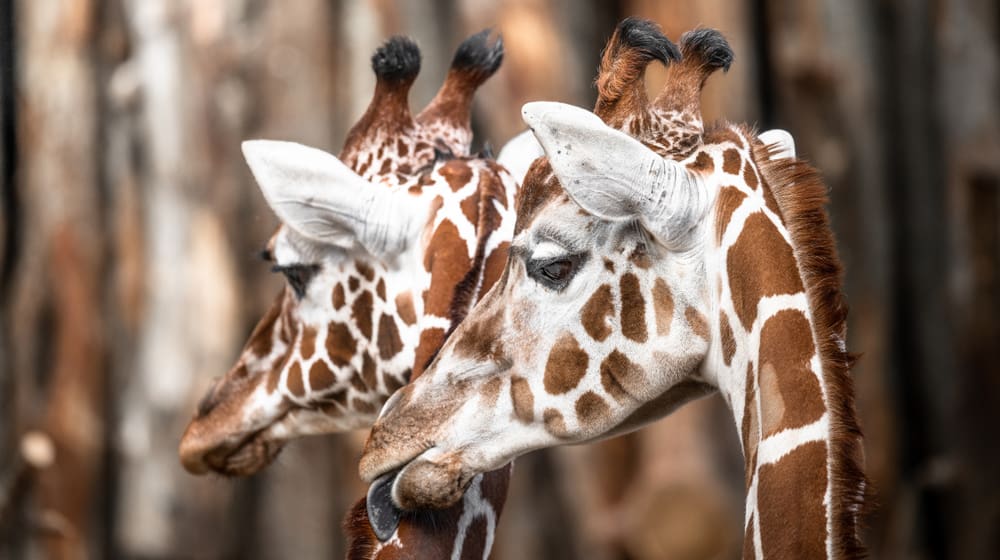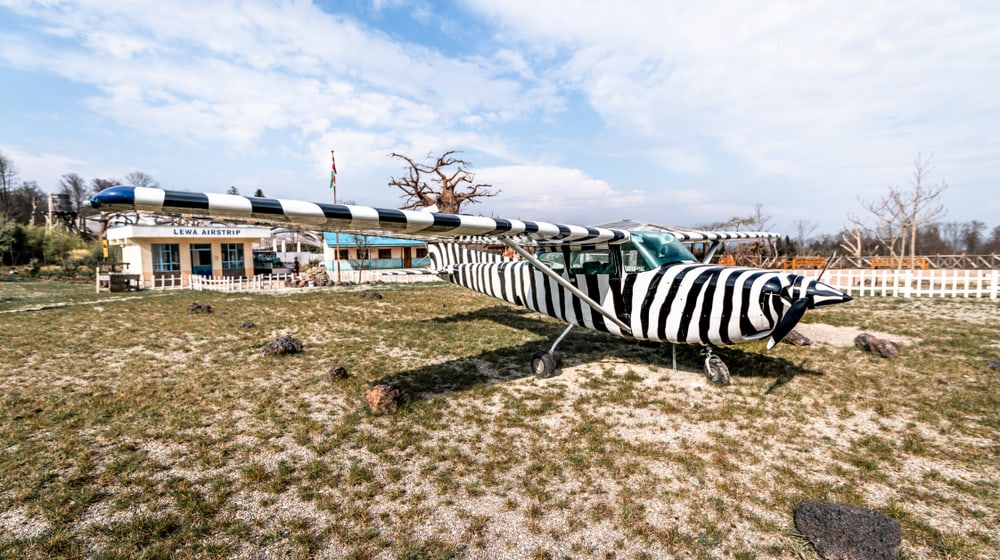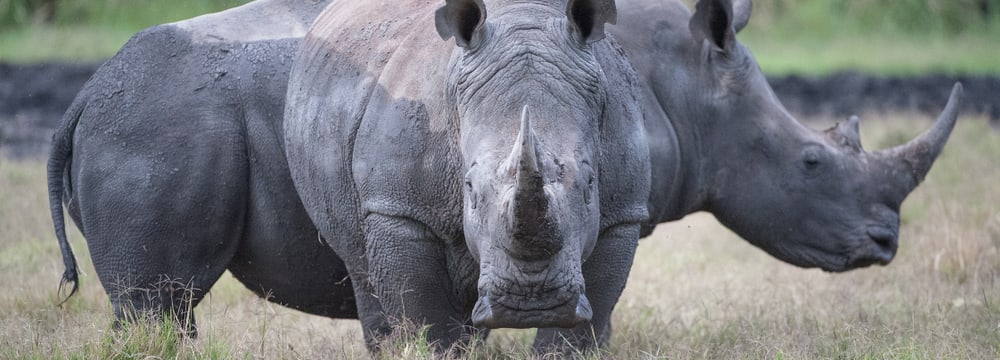
Lewa
Zoo Zurich's nature conservation partner in Kenya is Lewa Wildlife Conservancy. The reserve is a UNESCO World Heritage Site and is home to threatened species like black and white rhinos, elephants and Grevy’s zebras. To protect them, we count on well-trained personnel, partnerships in the region and the support of the local population.
Overview of the Lewa Conservation Project (short version). Video: Zoo Zürich, naturemovie.ch
Challenges
Poaching and the loss of habitats threaten Africa’s rhinos and elephants. Above all, the illegal hunting for horns and ivory threaten the populations of white and black rhinos. According to the Red List of Threatened Species, the black rhino is still threatened with extinction. In 1990s there were only 2500 animals in the whole of Africa - 400 of which were in Kenya. Thanks to intensive conservation efforts and an efficient population management, the population is slowly recovering. Today, almost 800 black and over 600 white rhinos live in Kenya, of which 15 % are indigenous to Lewa. The growth rate in Lewa is so large that the animals are relocated to other conservation areas with comparable security standards.
Presentation of the conservation project Lewa (long version). Video: Zoo Zürich, naturemovie.ch
Different teams, whose equipment and salaries we provide, work hand in hand in the fight against poaching. The security units guarantee the direct protection of the animals. Members of the anti-poaching team have full police functions and are commissioned by the Kenyan government. They patrol in the reserve, but are also frequently called upon to investigate cattle thefts and break-ins outside the borders of the reserve. In recent years, the anti-poaching team has significantly improved security in the surrounding communities.
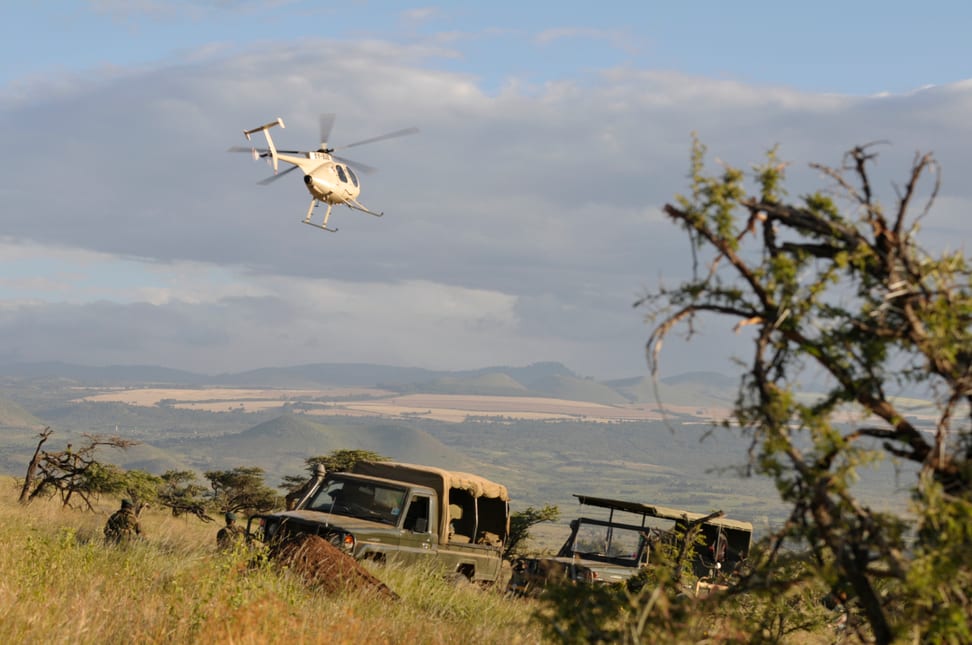
Rhinos need protection by the most modern means, around the clock. Photo: Zoo Zürich, Martin Bauert
With our contribution, it has been possible to convert the helicopter so that it can now also fly in darkness. In spite of greater security measures and tireless efforts by the team, there is the risk of attacks by poachers, primarily at night. With the helicopter, armed security teams can now be dropped quickly to provide additional strength on site.
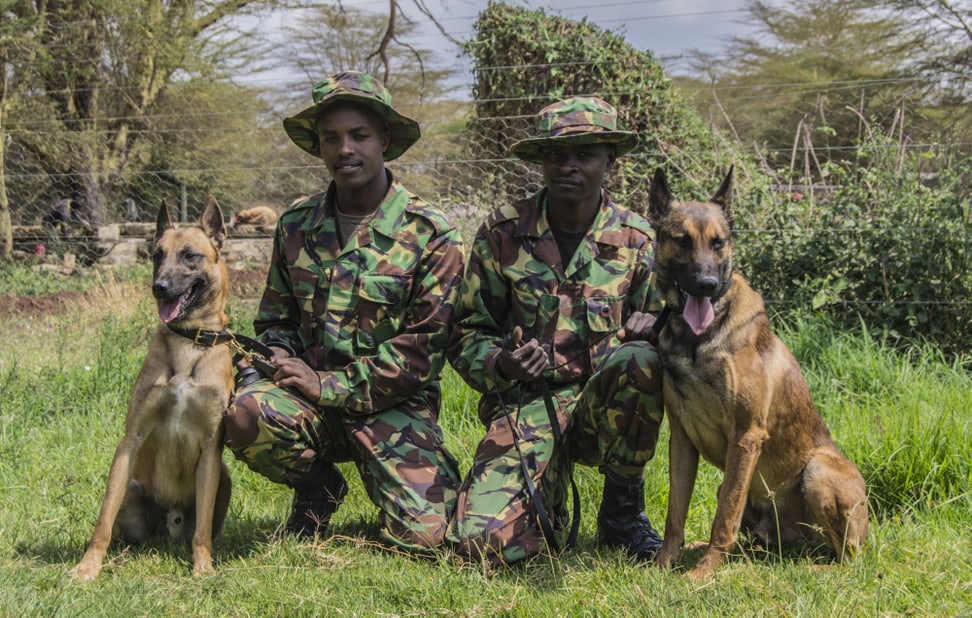
The tracker dogs Jack and Zack with their handlers Solomon and Lawrence. Photo: Lewa Wildlife Conservancy
Animals are also used in the fight against poaching. Tracker dogs and their handlers are part of the armed anti-poaching unit. The dogs are in the position to pursue the tracks of poachers and cattle thieves over large distances and can also trace odors from the crime scene to a poacher even after a long period. For this reason, dogs are also used as evidence before the courts. Thanks to our support, it has been possible to acquire the dogs, train them with their handlers as well as finance the emergency vehicle.
Number of poached rhinos
Thanks to the tireless conservation efforts, only three rhinos have fallen victim to poaching in the Lewa Wildlife Conservancy since 2013.
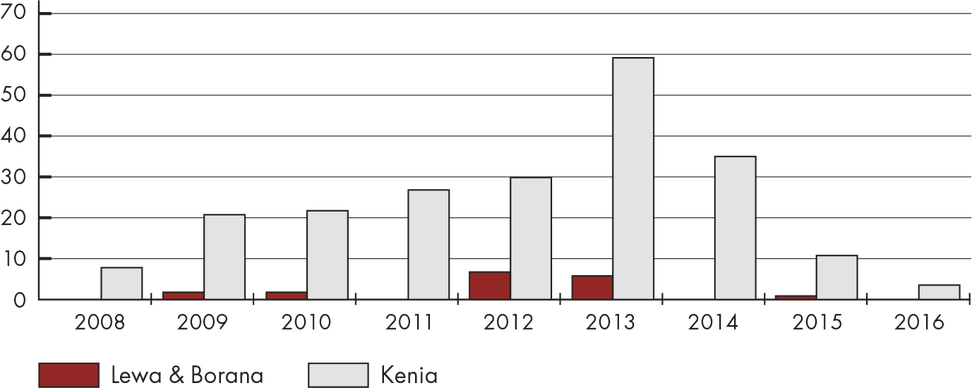
Graphic: Zoo Zürich
Numerous research teams roam the reserve and collect data. They observe the animals, document their health status, the social compositions of herds and create an overview of the development of the populations. Rhinos and Grevy’s zebras are given particular attention. The survival of every single animal is crucial, especially when it comes to endangered species. The species are therefore an additional valuable support in nature conservation.
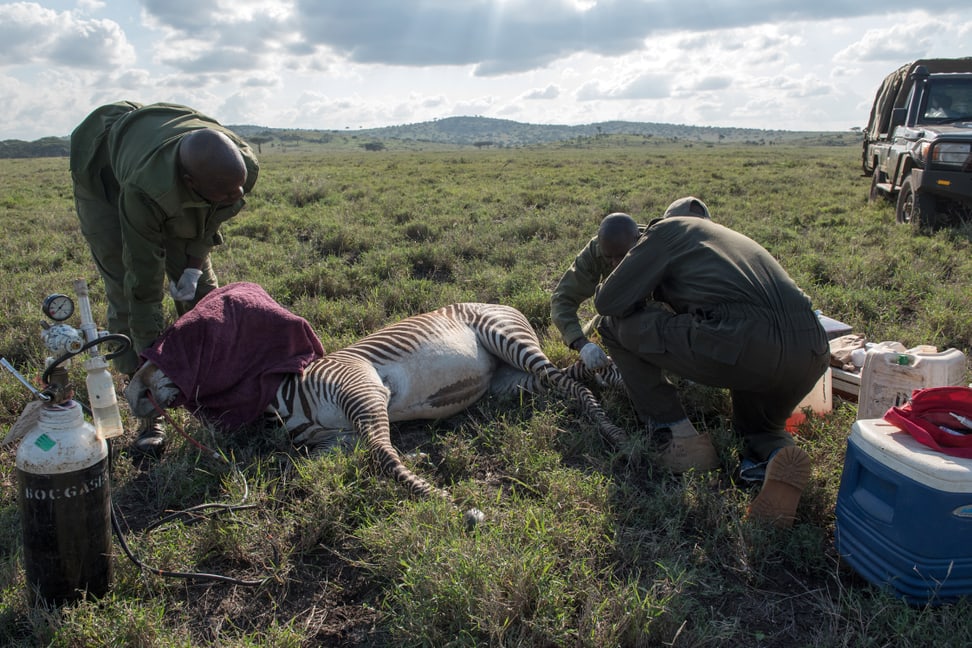
The vet cares for a Grevy’s zebra foal under anesthesia. He performs about 200 assignments per year. Photo: Zoo Zürich, Martin Bauert
The success which we have been able to record with our partners in Lewa is thanks to close cooperation with the local population. It is of inestimable value that the culture of togetherness between people and animals is also carried into the surrounding areas. In order to improve the living conditions of people, several schools and clinics as well as an environmental education center, where children and adults come into contact with environmental and conservation subjects, are part of our program.
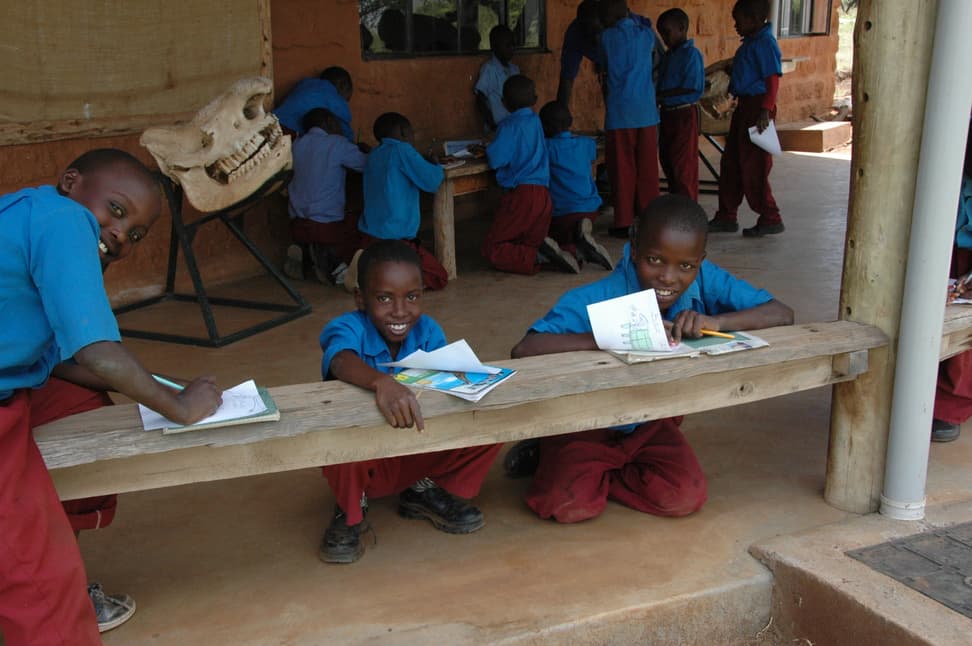
More than 5000 children and adults visit Lewa’s environment education center annually. Photo: Zoo Zürich, Isabelle Steiner
In addition, we promote various projects to improve sustainable agriculture, such as efficient irrigation systems. An important source of income for the reserve is tourism. Numerous jobs and employment opportunities have been created in and around Lewa as a result. Lewa with all of its facilities is now one of the largest employers in northern Kenya.
People are penetrating further and further into the habitats of wildlife around the reserve. This leads to conflicts. An example of this are elephants which destroy farmers’ fields on their migratory routes. We have been able to defuse this conflict on the southern border of the reserve because for some years a 15 kilometer fenced strip of land along a course of a stream, the so-called elephant corridor, the historical migrations between the Mount Kenya National Park and Lewa, has been re-established. The elephants and many other wildlife have quickly accepted the corridor. The corridor not only makes it possible for people and animals to live peacefully alongside one another, it also ensures important genetic exchange between the visibly isolated herds.
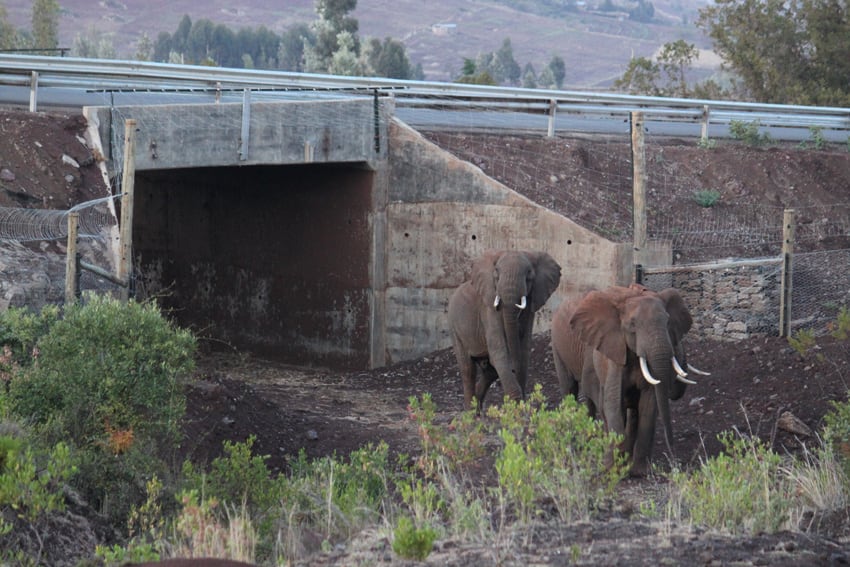
The corridor’s underpass guides the moving elephants under the national highway. Photo: Lewa Wildlife Conservancy
The fences between Lewa and neighboring Borana Conservancy have been opened for rhinos and other wildlife since 2015. Today more than 200 rhinos live on the unified land. Since then, the rhinos have bred so well that, thanks to our financial support to date, it has been possible to relocate more than 50 animals to the Ol Pejeta and Sera reserves in the Meru National Park. In the neighboring community Il Ngwesi there is currently an additional reserve being build where the rhinos can be at home in future. The relocations allow the endangered rhinos to have sufficiently large territories and feeding areas without the animals having to compete with one another.
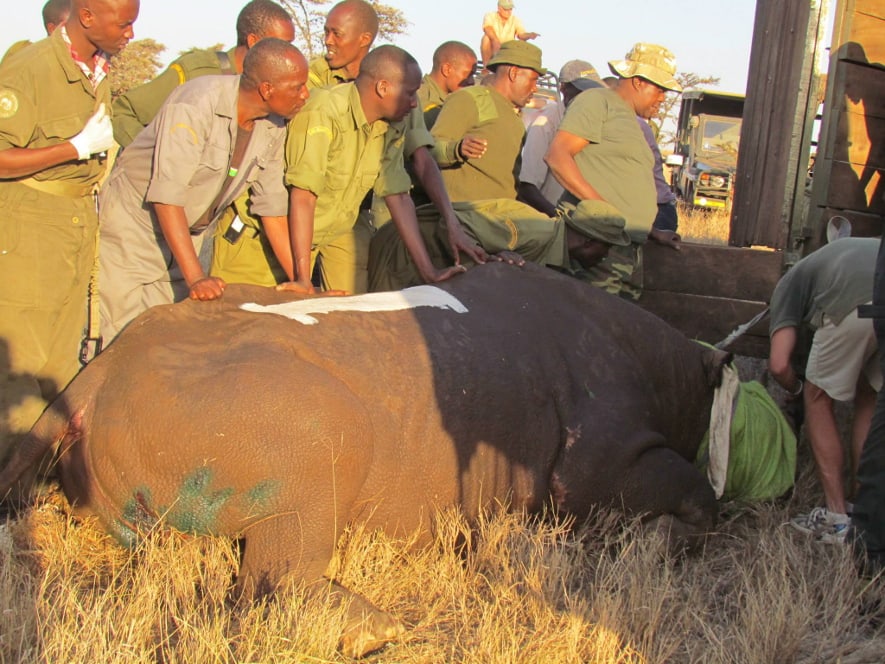
More than 100 black rhinos have been born in Lewa, some of which now live in other reserves. Photo: Lewa Wildlife Conservancy
Virtual tour through Lewa Wildlife Conservancy with Google Streetview.
Links to accommodation in Lewa and the surrounding area:
LEWA WILDLIFE CONSERVANCY
MT. KENYA NATIONAL PARK & RESERVE
Mt. Kenya National Park & Reserve
MERU NATIONAL PARK
BORANA CONSERVANCY (Lewa-NACHBAR)
NGARE NDARE FOREST TRUST (Lewa-NACHBAR)
IL NGWESI (Lewa-NACHBAR)
SAMBURU NATIONAL RESERVE (NÖRDLICH VON LEWA)
OL PEJATA CONSERVANCY
With the purchase of a limited Lewa conservation coin at a price of CHF 100 from the online shop of Zurich Zoo, a donation of CHF 50 goes to the Lewa project in Kenya.
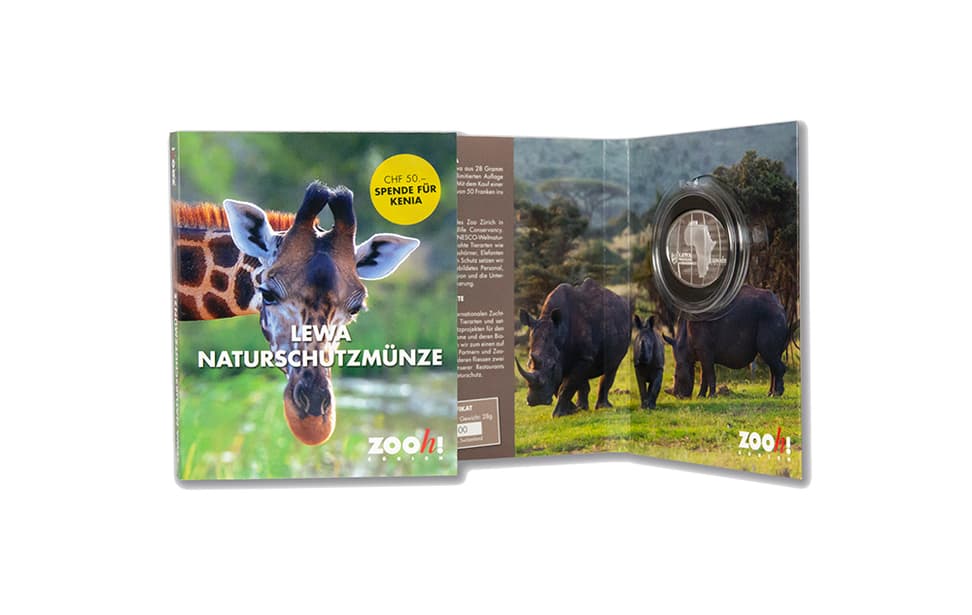
The Lewa conservation coin has a limited edition of 500.
